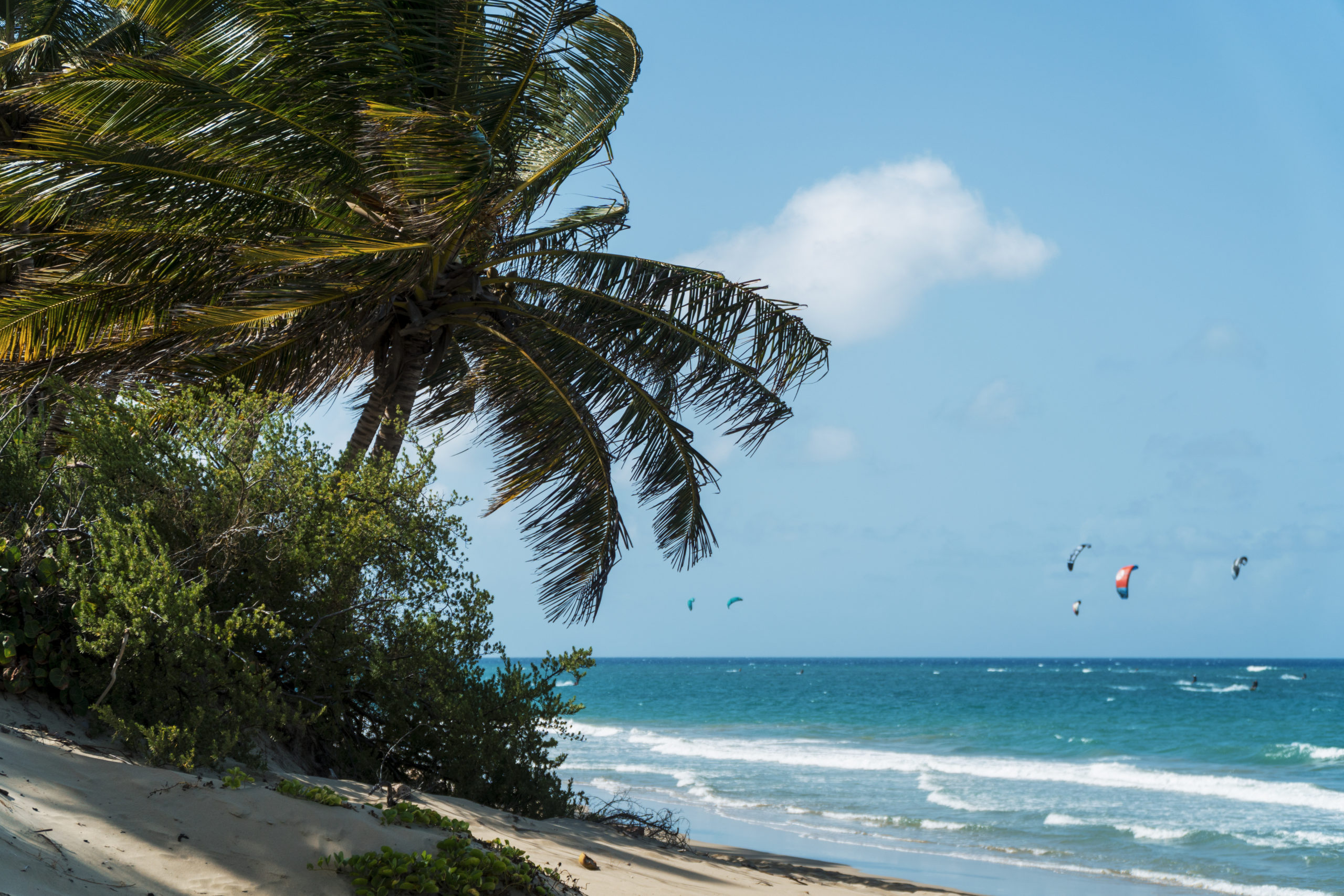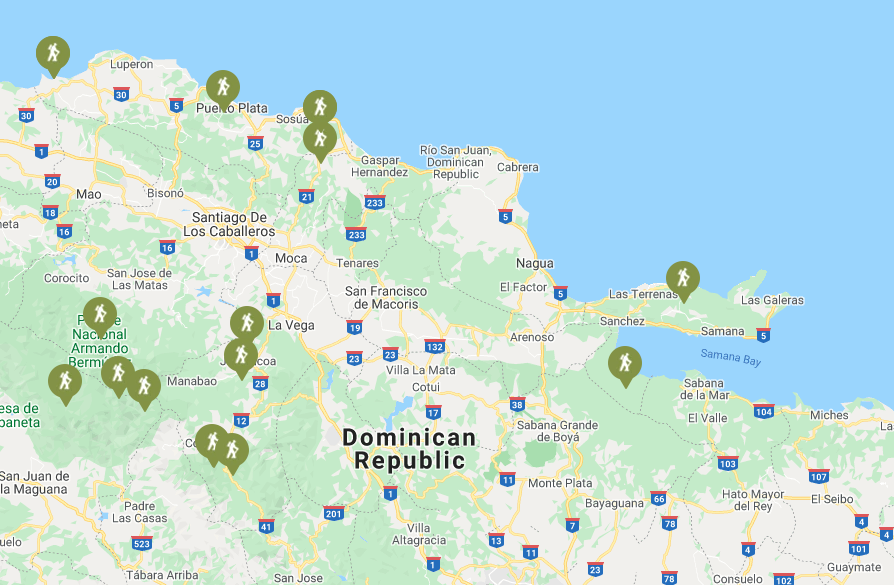
Cabarete is known around the world as a kitesurfing mecca. This piece of paradise offers ideal conditions for kiteboarding. With more enthusiasts discovering Cabarete as the place to experience the hottest watersport on the planet, it’s no wonder so many aficionados come here year after year.
Kitesurfing, also known as kiteboarding, is a sport that combines aspects of wakeboarding, windsurfing, surfing, paragliding, sailing, skateboarding and snowboarding (yes you read that right, skateboarders and snowboarders will love kiting!) into an action-packed extreme sport.
The best time of year for kitesurfing in Cabarete is between December and August. With prime wind conditions from January to March and June to July, the beaches tend to become crowded quickly. Cabarete has warm waters year-round and averages of 26°C/80°F in the winter and 30°C/86°F + in the summer. You can get away with wearing boardshorts and a rash guard to protect from the sun. A good hat and sunglasses are also strongly suggested.
Kiteboarders typically flock to Kite beach due to its sheer popularity, along with Cabarete Beach and Bozo Beach if they’re beginners. You will find the majority of Cabarete’s kite schools at these three beaches. By just sitting down at one of the beaches you will easily see a handful of pro-riders turning out tricks and drumming up applauds from on lookers.
La Boca River mouth and Playa Encuentro aren’t in Cabarete but happen to be less than 2.5 and 4 miles respectively from the town center. Each offer a unique benefit depending on the skill you’re looking to hone. Playa Encuentro is a great place for kitesurfers that enjoy riding waves. However, it is not a destination for beginners. La Boca River is perfect for kitesurfers looking for flat water to practice their freestyle skills.
With over a dozen kite schools in Cabarete, it can be hard to know which ones offer the newest equipment and best instructors. If you’re interested in taking a lesson, we will provide a list of recommended schools before or during your trip. Keep in mind, during busy season the best schools book up weeks and sometimes months in advance. Some of these schools even offer equipment storage and areas to hang out between sessions.
If you’re experienced and want to take a 1-3 day tour of Dominican Republic’s coastline, just let us know and we’ll place you in touch with the schools that offer these outings.

While Cabarete, Puerto Plata (Dominican Republic) is known as a kitesurfing and beach destination, there are several truly incredible hikes within driving distance that are A MUST before you leave our slice of paradise.
Best way to see the parks:
With tour operators like Iguana Mama offering guided hikes ranging from 3 hours to 3 days (with 2 nights of camping included), it’s easy to find a hike and expert guide that will meet the needs of solo, family and group travelers.
Pricing:
3-hour hikes start at $35 USD/adult: $28 USD/12yrs-17yrs: $18 USD/child under 12 (must be accompanied by an adult)
1-day hikes normally run around $70 USD/person
3 day/2-night hikes are around $450 USD/person + tax
Before setting out on a hike there are a few essentials you should never leave home without:
What to leave at home:
Most tour operators will include the following in their pricing. Depending on the length of your hike, some services may not be available. Always call or email the operator before leaving your home country to ensure you aren’t over or under packing:
Here are a few of our favorite hikes:
El Choco National Park – 3-hour hike
Difficulty level: All levels
Why we love this hike:
Mount Isabel de Torres – Approx. 8-hour hike (lunch included)
Difficulty level: Intermediate/advance hikers
Why we love this hike:
Pico Duarte (3 days/2 nights) – 4.5 hour drive from Cabarete
Difficulty level: Athletic beginners, intermediate and advanced hikers
Why we love this hike:
There are loads of hikes you can take without a guide. When you go for a hike on your own or with a group of friends, we highly suggest checking the weather forecast before departing Embocca. Additionally, having someone in your group that speaks Spanish is a major advantage – Dominican Republic is an international travel destination with many visitors coming from other Spanish speaking countries. A 2-way satellite communicator is extremely important if you’re hiking on your own. Most importantly, always make sure to bring more purified water than you think you’ll need – Once you enter the forest there will be no access to clean water. Lastly, don’t forget to ask our chef the night before your hike to pack snacks and sandwiches to keep you fueled and energized.